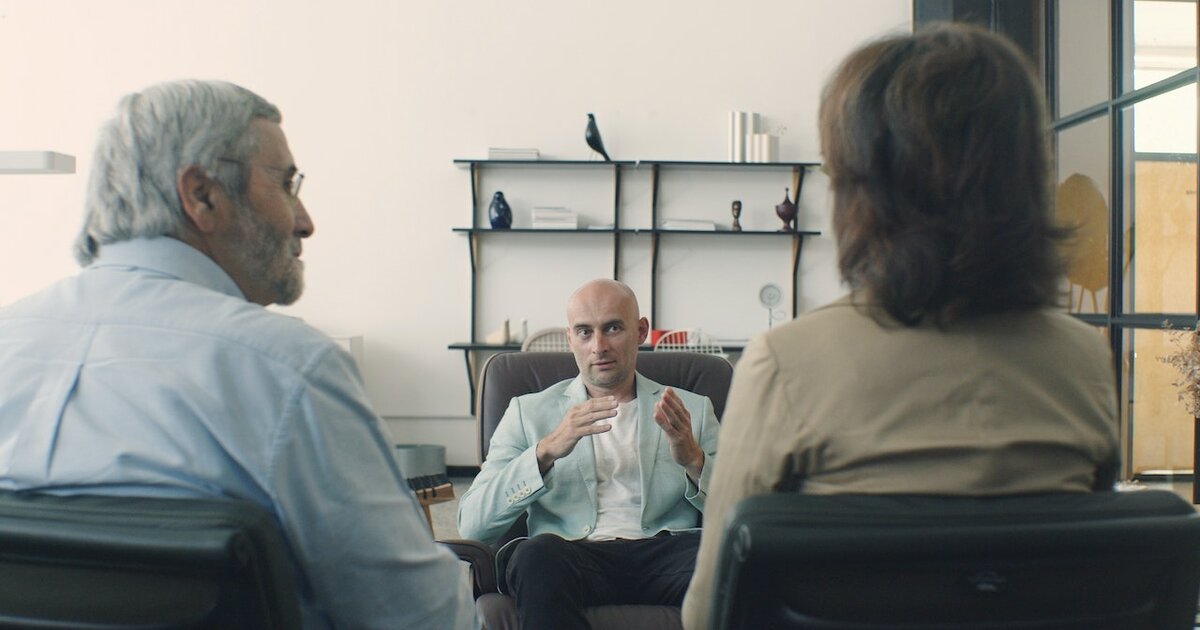Recruitment remains one of the most significant costs of and hindrances to a smooth clinical trial process. Challenges in patent recruitment for clinical trials come in multiple forms, and seemingly from every angle, but many, if not most, have a few fundamental things in common that make them simple to address with just an attitude adjustment and a redistribution of focus.
We’ll identify nine of these challenges and propose some solutions for them in this post. First, though, why are these challenges still an issue, and what makes them so dangerous?
Why Clinical Trial Recruitment Challenges Persist
For the duration of the existence of clinical trials, many of the same challenges have presented themselves repeatedly. The difference now, however, is that advanced research and analysis have shed light on exactly why this is. As we’ll discuss further on in the article, these discoveries have led to improvements in the way these challenges are met, but before we get to that, it’s important to understand what causes them, to make sense of how to address them.
Challenges in clinical research recruitment come from several places, both participant-facing, and relating to the design of the trial itself. One of the major issues is a lack of communication and presence – both internally and as outreach to the public from the clinical world.
Exposure to the concept of a clinical trial is already sorely lacking, and even harder to find is a realistic representation of what one entails and what it’s good for. While worst-case scenarios like the TGN1412 trial disaster making headlines, regulatory bodies are making the appropriate adjustments, but not as much is being done by sponsors to paint a better picture to the public.
So, even of those who are familiar with clinical trials, many fewer are going to be comfortable taking part, and this will continue to be an issue until there’s a change in approach when it comes to public education and the overall involvement with scientific research as a whole.
There are solutions appearing, many in the form of technological advancements in communication or statistical analysis. We’ll touch on some of those later, too, but before that, it’s important to emphasize exactly why these recruitment challenges represent such a threat to medical research.
The Desperate Need to Address Challenges in Patient Recruitment for Clinical Trials
The first and most obvious thing to point out is that recruitment costs money. But there are wider implications to recruitment challenges than simply the recruitment itself. Poor retention is one of the driving forces behind missed deadlines and stretched budgets, and while this may appear to be a separate metric from recruitment, they’re intimately related.
Recruiting the right patients will necessarily lower drop-out rates, and having a patient drop out can result in higher recruitment costs either as a replacement or by way of compensating for expected losses at the recruitment stage.
Low retention costs millions of dollars per day and can set trials back for months. Some are delayed by years in particularly serious cases, and where the time it takes to recover is significant enough, this can make the entire endeavor prohibitively expensive.
Losing patients also means losing data, and in most cases, data up to the point of drop-out is rendered invalid. This adds to the cost of replacing them and can also jeopardize the power of the study to the point where it’s canceled.
One of the other key factors in recruitment is patient advocacy. With poor recruitment practices and low retention, each missed opportunity represents the loss of a potential advocate who may have been able to aid in recruitment down the line. A successful trial with a good patient experience results in a happy patient who tells people about their pleasant journey and not only spreads awareness but refers like-minded individuals to future trials.
A negative experience has the opposite effect, reducing your options by spreading the bad reputation generated by a poor patient experience. Each trial that has to end prematurely as a result of overspending or missing deadlines doesn’t just represent a cost to sponsors, it’s also a loss to the medical community and a potential treatment missed.
So, challenges in patient recruitment for clinical trials relate closely to those affecting retention too, and both affect one another. As a result, recruitment challenges are retention challenges and therefore challenges to the success of the trial itself in more ways than simply reaching the right sample size.

The Most Common Patient Recruitment Challenges and Potential Solutions
As we mentioned, there are participant-facing barriers to recruitment and there are inherent components of trial design that can get in the way of a smooth and effective recruitment process. Here’s a list with a mix of both.
1. Fear of side effects in clinical trials
Even before high-profile scares such as the TGN1412 trial, people have been concerned about being used as guinea pigs for the faceless machine of medical science. This is an issue that could have been addressed sooner, yet it persists due to the way resources are partitioned in trial design.
The issue is compounded in trials targeting serious conditions due to the worry that the patient may receive the placebo control. In cancer patients alone, only 3% of adult patients participate in trials.
The solution to this challenge is to take on a more patient-oriented approach to research, dedicating more time and money to conversations with patients, family involvement, and the general demystification of the trial process and what goes into becoming a participant.
While attitudes are slowly coming to adjust to this concept, technological solutions are making it easier for those who have made the change. Digital health technology has helped in several ways to present and distribute patient education, boosting both recruitment and retention in trials.
2. Lack of awareness about clinical trials in patients
Still, there’s no room to persuade a participant of the safety and value of a study if they don’t know it exists. It’s suggested that well over half of the people in the US have never seen an advert for a clinical trial, and this is a problem considering the voluntary nature of participation.
This process of volunteering relies heavily on the ethics of informed consent, which is a product of the effectiveness of trials to make participants of the fact and nature of their existence. There are numerous motivations for taking part in a clinical trial, and these can be well understood with today’s analytical software.
As such, there should already be information available to those who look for it, as well as active drives to draw attention to trials in general and boost awareness. Healthcare providers too should be taking some of the responsibility to promote research awareness and its benefits to community health.
Then, pharmaceutical companies should be offering resources and information to the public in mainstream channels to drive awareness and educate prospective participants.
3. Complexity of study protocol reduces prospects and neglects applicants
Once interest has been generated, it can still be easily lost. The complexity of modern studies provides two challenges to clinical research: firstly, it creates the need for a much higher patient retention rate due to the narrowing of the potential applicant pool. Secondly, it provides multiple opportunities for researchers to drop the ball when it comes to patient engagement and education, leading to dropout.
Technology is both the cause of and the solution to this issue. Advancements in software solutions have led to the ability for more granular and higher-volume of data in rare and difficult-to-treat conditions. The specificity of the data required then leads to a reduction in eligible applicants, and this in turn leads to a higher chance of good retention.
Retention is boosted by technology designed to simplify the process of recruitment and the patient experience throughout the trial. EDC and wearable devices are among many of the technologies that make data capture and monitoring less time-consuming, less intrusive, and simpler all around.
4. Cultural or language barriers
In many trials, a lack of English skills represents a significant ineligibility criterion. This is an issue in itself, but particularly so where an even representation of ethnic minorities needs to be sourced. For multisite trials, this can sometimes be mitigated by outsourcing clinical research to emerging countries, but even this is a significant challenge.
For eligible participants who have a preferred language that doesn’t match the study, culturally competent researchers will be needed to address multiple concerns. Promotional materials need to be culturally appropriate and tailored to multiple educational levels. These materials will need to be professionally translated and compliant with regulations.
5. Proximity to the trial is a challenge to patients
One surefire way to reduce engagement in a trial is to force participants to struggle to take part. This will put people off from the start, but it will certainly increase dropout rates for those who manage to agree to take part.

6. Slow patient onboarding process
Another great reason for a patient to lose interest is poorly-managed onboarding. You may have someone with complete interest and trust in the process, offering fully informed consent, and at peak levels of engagement before startup. However, if you neglect this momentum, they’re a significant risk of giving up.
Schedule delays, understaffing, and various other issues faced in the process of starting up shouldn’t result in the oversight of patient engagement, and a well-organized onboarding process for patients should be able to keep people motivated even while waiting to get started. Diverting resources to this part of the planning stage early can save valuable hours and dollars down the line.
For best recruitment planning, sponsors should choose from a range of tools to assist in targeting, marketing, and shortlisting patients, as well as keeping them engaged through the journey to startup. CROs may offer CTSM, eSource, EDC, ePro, eTMF tools, and other useful solutions for this purpose.
7. Careful Site Selection
Site location is a key factor in recruitment delays and roadblocks that we mentioned before, but there are other things to consider when looking at sites for a trial. Site quality is more than just about proximity to the target population, it’s also about the qualification of the staff, the facilities available, and the ease with which it can be monitored.
Good access to the patient population is a primary driver of site selection, but without the right expertise to create a comfortable environment, it’s only going to provide half the solution. It’s possible that the sites for enrolling patients won’t be the same as those planned to treat them.
Consider the overall recruitment plan when selecting sites, and factor in the convenience of the pre-screening studies where needed. Smartphones and other communications devices can be used to vary the need for and location of sites by offering much of the screening work remotely, as well as providing patient educational material for consent purposes. All of this reduces the pressure on sites and may affect the choice of the site accordingly.
8. Contract and budget negotiation at sites is a common cause of delays
When sites are selected, there are plenty of points at which snags can appear, causing delays to startup and hindering recruitment. In cases where multiple sites are being used, this can lead to prospect leads going cold, in the same way, that an under-prepared onboarding process will.
Having a thorough site selection plan and well-planned feasibility studies on hand to make the negotiations faster will help in this case, but again, the patient-centered approach should dictate that more resources are spent keeping applicants and recruits engaged during these processes.
As usual, this comes down to communication, follow-up capacity, access to information, and the overall relationship building between trial organizers and the participants.
9. External vendor coordination can hinder recruitment at the last minute
When all is said and done and patients are lined up and ready for screening, there’s still room for delays when it comes to supplies. Study-vendor coordination is a common point of fatigue, and delays in shipping will cascade into delays in site activation and enrolment.
The best way to handle this is to leverage communications platforms like CRMs, mobile messaging services, or CTMS to keep all stakeholders in one place and set alerts for deadlines and follow-ups. Clear and timely communication is the solution to many clinical trial recruitment challenges, but thankfully we live in a time where this is the easiest problem to fix.
Patient-Centricity and Communication
From the moment a patient becomes aware of clinical trials, through screening, enrollment, and the entire patient journey, communication will need to be the primary focus to enable the patient-centric approach required to benefit recruitment and retention.
From putting out ads to engaging with the individual to providing the vast amount of necessary information for informed consent and compliance, and receiving their data in return, the vast majority of communications involved can be handled remotely and with modern technology.
This clearly represents an advance in speed and efficiency on one hand, but it leaves the door wide open for neglect on the other. The more complex and diverse the information an applicant has to process, the more guidance they will appreciate, and this information gap can lead to two negative outcomes.
First, it may put them off to the point where they lose interest, and their enrolment is off the table. Secondly, and far more seriously, it can lead to them signing up for something that they don’t understand.
Technology, however, offers some solutions here, too. Multimedia patient education; training videos, visualizations, animations, and all the range of media that can be leveraged to help inform and encourage patients should be used.
Running the trial with this patient experience in mind goes well beyond recruitment stages, too. Keeping up this level of engagement and focusing on the positive patient experience leads to better retention, which, as we have discussed, improves recruitment down the line. Both in the reduced need to compensate for losses, and the boosts that come from patient advocacy.
With that in mind, it’s important to extend the communication beyond the length of the trial and into follow-up too. By topping off a good experience with a follow-up communication you’ll be providing valuable closure that will help cement the positive attitude and create a lifelong advocate.
Conclusion
Patient recruitment challenges have persisted for so long, in part due to a problematic approach to research. As more trials take a patient-centered look at what they’re doing, it becomes clear that treating patients like guinea pigs leaves a lot to be desired. In diverting resources to the betterment of the patient experience – from the moment they first discover clinical trials, to the follow-up messages on its completion – recruitment sees substantial improvements and retention along with it.
Communication is the key, and in the modern world, with so many technological solutions, there’s little excuse for neglecting patients when it comes to keeping them informed.







